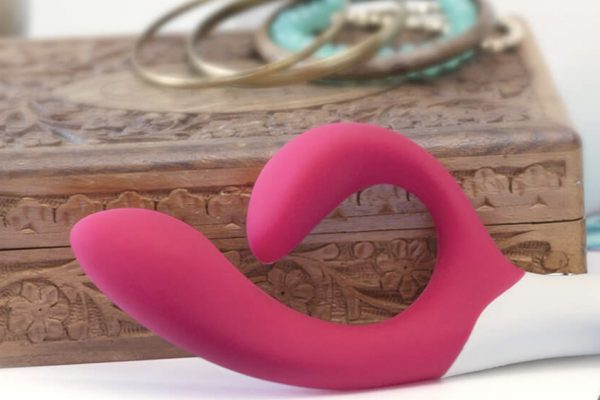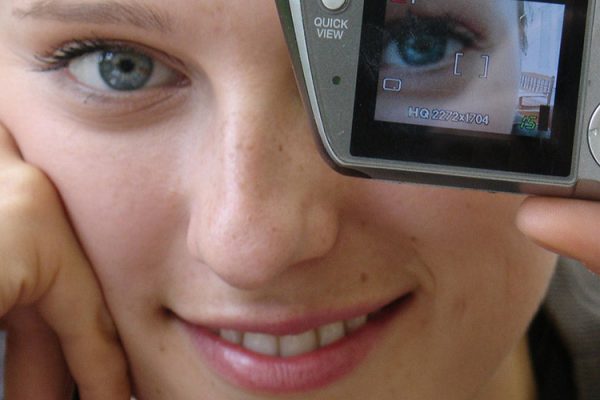Like writing a phone number with a Sharpie on the back of your hand, could we soon be able to print electronics on human skin? Researchers at the University of Minnesota have developed a groundbreaking 3D printing process that could, quite possibly, develop into the ultimate in wearable technology.
Wearable tech has come on leaps and bounds over the past few years, and the boom appears to be far from over. In fact, the ultimate step forward could be right around the corner, thanks to researchers from the University of Minnesota’s College of Science and Engineering.
The research team, led by associate professor Michael McAlpine, constructed a one-of-a-kind multifunctional 3D printer. It produces stretchable electronic fabric and prints in four layers that, unlike the liquid plastic ink used in traditional 3D printing, can dry at room temperature and stretch to up to three times their size.
As McAlpine explained, the fabric “has many practical uses. Putting this type of ‘bionic skin’ on surgical robots would give surgeons the ability to actually feel during minimally invasive surgeries, which would make surgery easier instead of just using cameras like they do now. These sensors could also make it easier for other robots to walk and interact with their environment.”
It doesn’t stop there. McAlpine also noted the team’s process could, in the future, be used to print electronics on human skin. Although this hasn’t been attempted yet, the team was able to use the technique to print on the curved surface of a model hand. In addition, a printed device was interfaced with the skin, made the device sensitive enough to detect one’s pulse in real time.
This way, options for the use of this technique and the bionic skin itself could expand even further. From assisting with health monitoring to energy harvesting and chemical sensing, areas in which this process could turn out to be revolutionary seem almost endless.
Sensory skin and sex tech — likely bedfellows?
In the past few years, research and discourse on the impact of technology on sexuality have found their way into mainstream conversation. For instance, last December Hacksmiths, the tech society at Goldsmiths University of London, hosted Europe’s first sex-tech hack event. The gathering brought forward a wealth of ideas that could help take sex hardware beyond just toys.
‘Cybra’ being built by @camwldrdg @maythegoat @nat_lelouch #sextechhack pic.twitter.com/ZzINxkDksB
— Hacksmiths (@hacksmiths) December 17, 2016
With the current social environment in mind, it’s interesting to consider the possibilities of McAlpine’s work. App-controlled toys have been around for a while now. With virtual reality adult entertainment already breaking exciting new ground, could McAlpine and his research team’s 3D printer produce an unlikely, but worthy, addition to the line-up?
As blogger Girl on the Net noted, almost any advance in technology has a sexual application. So, let’s imagine how this printer might produce something that could be hacked into having a sexual application. The key here is the mention of interaction with an environment — mentioned earlier as a future option for use with robots. What if down the line, however, the sensor fabric could be part of a way for humans to interact with a virtual environment? Specifically, what if the fabric could help create a new way for cam models to do their work?
Camming working side-by-side with sex tech
We’ve already seen just how interactive sex toys can work for cam. Take, for example, Dutch teledildonics company KIIROO. There’s also the OhMiBod. Both are fine examples of sex tech’s presence in the adult industry, and they could give us some ideas as to how McAlpine’s 3D printer (or its fabric) could be used to add a new dimension to the camming experience.
With technology, there always will be a fear that some day tech will develop enough to take over from humans. Much like the ongoing argument that sex toys replacing partners, one could speculate about how human cam models could become obsolete, “replaced” by sex robot counterparts. But, as with many things relating to tech, this would be an incredibly simplistic way of looking at the situation.
Rather, we could try to see ways technology could play into the camming experience, give or take a little tinkering with the tech itself. In the case of McAlpine’s printer and the sensor fabric it produces, one could elevate existing teledildonics-tech (like the OhMiBod and KIIROO toys) to the next level, providing an even more interactive experience for both model and viewer. A model could, for instance, interface her fingers with the sensory fabric and turn her hand into an interactive vibrator, hooking the tech up to the chat room and letting viewers play with the vibration speeds.
Or, taking the idea slightly further, how about a combination of VR and the sensory fabric to provide viewers with a truly interactive experience? A model potentially could create extra revenue from her clips by setting them up with this suggested VR/fabric combination.
Just two options which, thanks to Michael McAlpine and his research team, may not seem so far-fetched in the near future.
—
Jillian Boyd is an author and editor based in London. She blogs at LadyLaidBare.com. Follow her on Twitter at @JillyBoyd and email her at jillian@ynotcam.com.
In case you need help imagining what the heck sensory skin is:
Image © Liudmila Gridina.











[…] at webcam models, with articles on topics ranging from tech to health and beauty, to internet law. My first article was a lot of fun to dig into – it concerned the recent development of a one-of-a-kind 3D […]